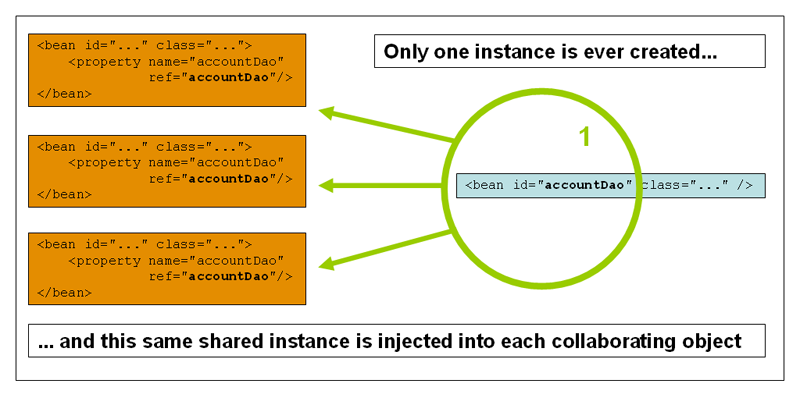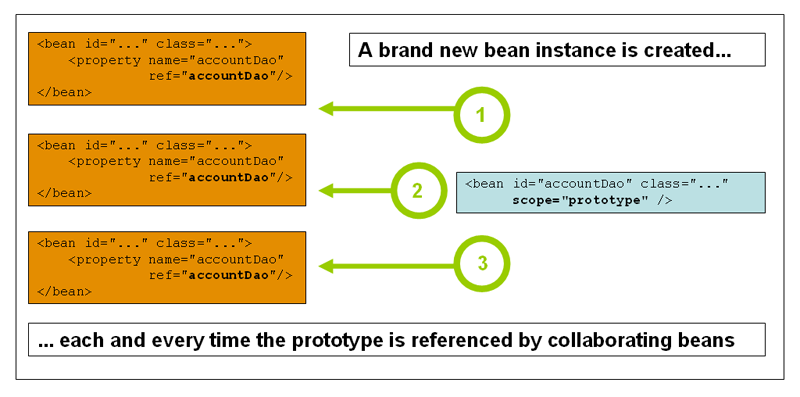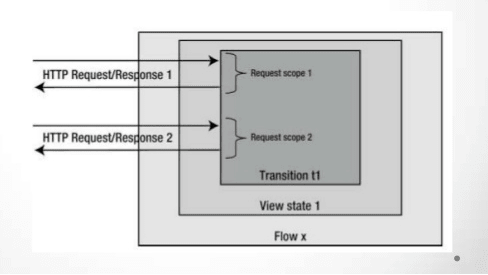Detailed explanation for each scope can be found here in Spring bean scopes. Below is the summary
Singleton -
(Default) Scopes a single bean definition to a single object instance per Spring IoC container.
prototype - Scopes a single bean definition to any number of object instances.
request - Scopes a single bean definition to the lifecycle of a single HTTP request; that is, each HTTP request has its own instance of a bean created off the back of a single bean definition. Only valid in the context of a web-aware Spring ApplicationContext.
session - Scopes a single bean definition to the lifecycle of an HTTP Session. Only valid in the context of a web-aware Spring ApplicationContext.
global session - Scopes a single bean definition to the lifecycle of a global HTTP Session. Typically only valid when used in a portlet context. Only valid in the context of a web-aware Spring ApplicationContext.



